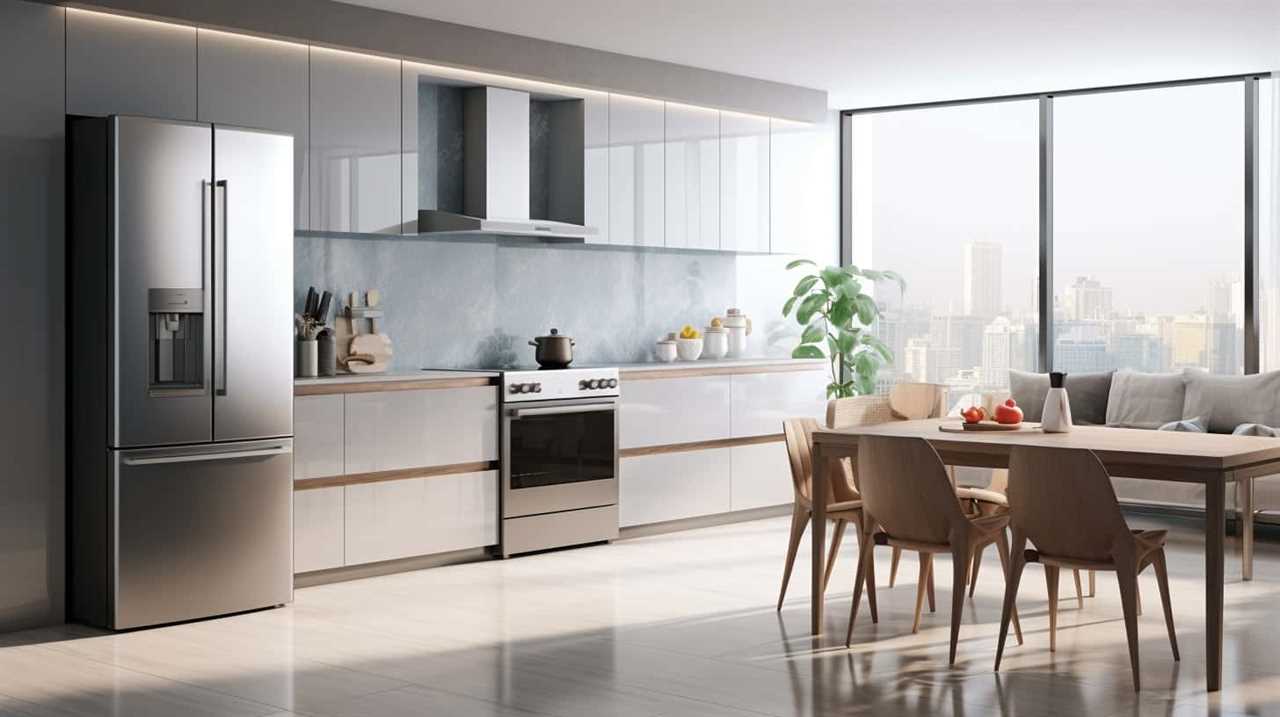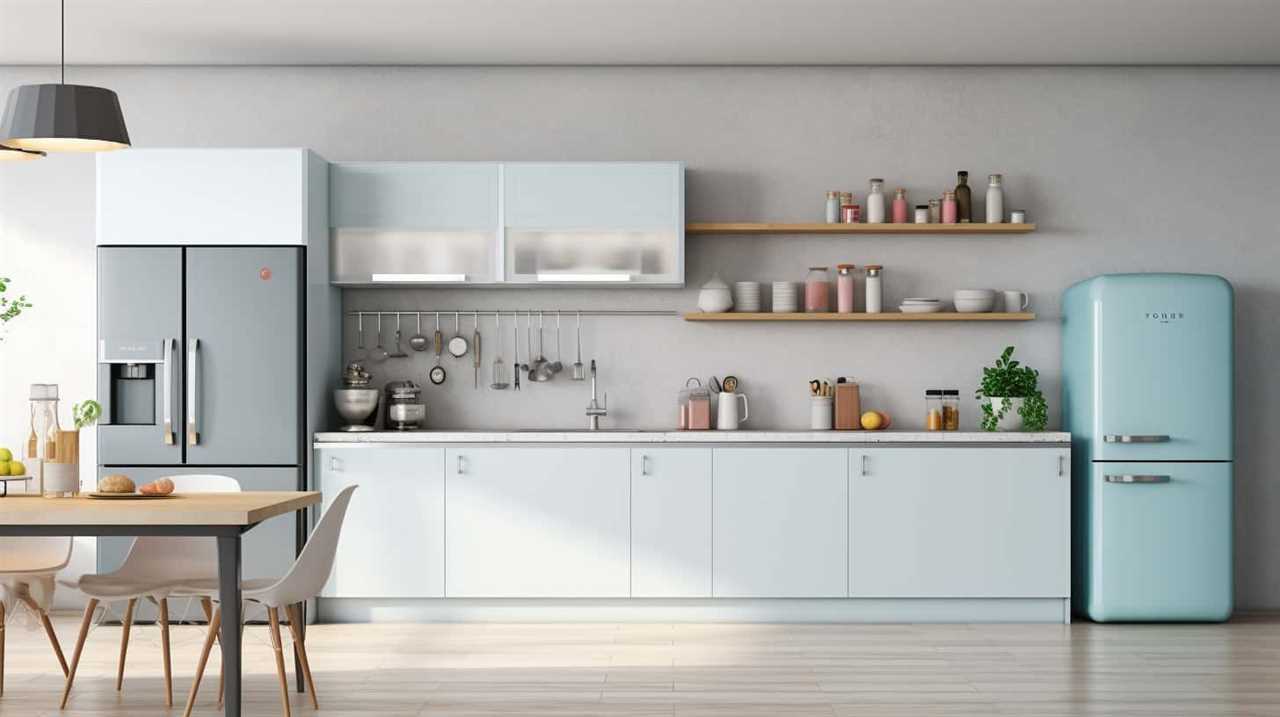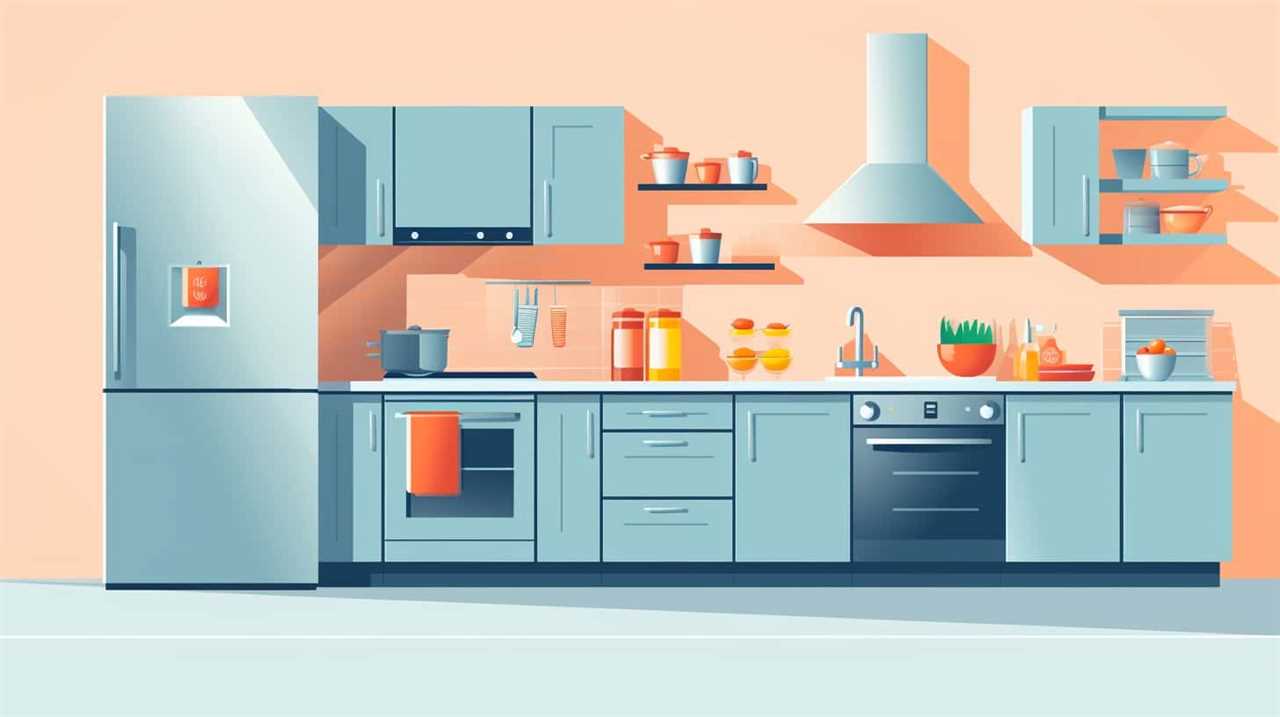Curious if your Indian appliances will function properly in Canada? You’re in luck because we have the information you need!
In this article, we’ll explore the electrical voltage and frequency differences between the two countries, the compatibility of Indian plugs and sockets with Canadian systems, and whether voltage converters and adapters actually work.
We’ll also discuss the pros and cons of buying new appliances in Canada and provide tips for using your Indian appliances effectively.
So let’s dive in and find out if Indian appliances can truly work in Canada!

Key Takeaways
- Indian appliances operate on a different voltage and frequency compared to Canada, which can lead to overheating and damage, as well as affect the performance of appliances with motors.
- Plug shape compatibility between Indian and Canadian outlets may require the use of adapters or converters.
- Voltage converters are necessary to ensure Indian appliances receive the correct voltage in Canada, and high-quality converters should be used to prevent damage or electrical hazards.
- Converting Indian appliances to Canadian standards, using transformers if needed, is important to ensure safe and efficient usage.
Electrical Voltage and Frequency Differences
Discussing the electrical voltage and frequency differences between India and Canada, we found that our Indian appliances may not work properly due to the variations in power supply.
In India, the electrical voltage is 230 volts at a frequency of 50 hertz, while in Canada it’s 120 volts at a frequency of 60 hertz. This difference in voltage and frequency can cause issues when using Indian appliances in Canada.
Firstly, the voltage difference can lead to overheating and damage to the appliances.
Secondly, the frequency difference can affect the performance of appliances with motors, such as fans and refrigerators.

Additionally, plug shape compatibility can be a concern, as India uses the Type D and Type M plugs, while Canada uses the Type A and Type B plugs.
It’s important to consider these electrical differences and ensure that appropriate adapters or voltage converters are used to maintain safety standards and prevent damage to the appliances.
Compatibility of Indian Plugs and Sockets
When considering the compatibility of Indian plugs and sockets in Canada, there are two main points to address.
Firstly, the shape of the plugs in India differs from those in Canada, so an adapter or converter may be necessary.

Secondly, the voltage compatibility between the two countries should be taken into consideration, as India operates on a 230V system while Canada operates on a 120V system.
Both of these factors need to be considered in order to ensure that Indian appliances can be used safely and effectively in Canada.
Plug Shape Differences
The compatibility of Indian plugs and sockets with Canadian appliances is a crucial factor to consider when using Indian appliances in Canada. In India, the standard plug shape is Type D, which features three round pins in a triangular formation. However, in Canada, the standard plug shape is Type A or Type B, which features two flat pins or two flat pins and a grounding pin, respectively.
These plug shape differences mean that Indian appliances can’t be directly plugged into Canadian power outlets without the use of voltage converters or power outlet converters. These converters allow Indian plugs to be adapted to fit Canadian power outlets, ensuring compatibility and safe usage.

However, it’s important to note that plug shape differences are just one aspect of compatibility, and voltage compatibility concerns must also be addressed when using Indian appliances in Canada.
Voltage Compatibility Concerns
As we delve into voltage compatibility concerns for Indian plugs and sockets in Canada, it’s important to consider the impact on overall appliance functionality. When using Indian appliances in Canada, there are several factors to keep in mind:
- Voltage converters: Since India operates on a 230V power supply, while Canada uses 120V, a voltage converter is necessary to ensure the appliance receives the correct voltage. These converters can be purchased and used to adapt the appliance to the Canadian electrical system.
- Safety precautions: It’s crucial to use voltage converters that are of high quality to prevent any damage to the appliance or risk of electrical hazards. Additionally, it’s important to follow all safety guidelines when using electrical appliances to ensure a safe and efficient operation.
Understanding these voltage compatibility concerns and taking appropriate safety precautions will help ensure that Indian appliances can be used effectively and safely in Canada.
Now, let’s explore the next section about understanding Canadian electrical systems.

Understanding Canadian Electrical Systems
Now, let’s take a closer look at the Canadian electrical systems and understand how they may differ from those in India.
One important aspect to consider is the voltage compatibility for appliances. In Canada, the standard voltage is 120V, while in India it’s 230V.
Additionally, power outlet configurations can vary between the two countries.
Voltage Compatibility for Appliances
We should understand the voltage compatibility for appliances in Canadian electrical systems. It’s important to note that the electrical system in Canada operates at a standard voltage of 120 volts, whereas in India, the standard voltage is 230 volts. This difference in voltage can create a problem when using Indian appliances in Canada.

To ensure that your appliances work safely and efficiently, there are a few things to consider:
- Voltage Converters: Using a voltage converter can help you adjust the voltage of your Indian appliances to match the Canadian electrical system. However, it’s crucial to choose a converter that’s compatible with the specific wattage and voltage requirements of your appliances.
- Safety Precautions: When using voltage converters, it’s essential to follow the manufacturer’s instructions and guidelines to ensure safety. It’s also recommended to check the power rating of your appliances to ensure they’re compatible with the voltage converter.
Power Outlet Configurations
To further understand Canadian electrical systems, let’s delve into the power outlet configurations.
In Canada, the electrical socket compatibility differs from that of India. Canadian power outlets have a standard voltage of 120 volts and a frequency of 60 Hz. The outlets are designed with two parallel flat pins and a grounding pin. This means that Indian appliances with different plug types won’t fit directly into Canadian power outlets.
However, there are power converter options available that can help overcome this issue. These converters act as an intermediary between the Indian appliance and the Canadian power outlet, allowing for compatibility.

In the next section, we’ll explore the process of converting Indian appliances to Canadian standards, ensuring safe and efficient usage.
Converting Indian Appliances to Canadian Standards
Converting Indian appliances to Canadian standards requires understanding the differences in electrical systems and voltage requirements. In India, the standard voltage is 230 volts, while in Canada, it’s 120 volts. To ensure compatibility, you can use transformers to convert the voltage from 230 volts to 120 volts.
Here are some key points to consider when converting Indian appliances to Canadian standards:
- Voltage converters: These devices are designed to convert the voltage from one standard to another. They can be used to convert the voltage of Indian appliances to the Canadian standard.
- Power adapters: These adapters allow you to physically connect Indian appliances to Canadian power outlets. However, they don’t convert the voltage, so they should only be used if the appliance is compatible with the Canadian voltage.
- Compatibility: It’s important to check the compatibility of the appliances with the Canadian voltage before attempting to convert them. Some appliances may not be designed to work with a different voltage, even with the use of transformers.
Converting Indian appliances to Canadian standards can be done with the help of voltage converters and adapters. However, it’s crucial to ensure compatibility and understand the limitations of these devices.

Voltage Converters and Adapters: Do They Work
Using voltage converters and adapters is a common method for ensuring the compatibility of Indian appliances with the Canadian electrical system. However, it’s important to consider the reliability of voltage converters and the compatibility of adapters when using them.
A voltage converter converts the electrical voltage from one level to another, allowing the appliance to function properly. The reliability of a voltage converter depends on its quality and capacity to handle the electrical load. It’s important to choose a voltage converter that matches the wattage of the appliance to avoid damage or malfunction.
On the other hand, adapters are used to physically connect the Indian appliance to the Canadian electrical outlets. It’s crucial to check the compatibility of the adapter with the specific type of outlet in Canada. Some adapters may not fit properly or provide a secure connection, which can lead to electrical hazards.
To summarize, while voltage converters and adapters can be effective in making Indian appliances work in Canada, it’s essential to ensure the reliability of the voltage converter and the compatibility of the adapter to minimize any potential risks.

Potential Risks and Safety Concerns
When it comes to using Indian appliances in Canada, there are potential risks and safety concerns that need to be addressed.
One major concern is the voltage compatibility between the two countries. Indian appliances typically operate on a voltage of 220-240 volts, while Canada uses a voltage of 110-120 volts.
This voltage disparity can lead to issues such as overheating and electrical failures, which pose a fire hazard risk.
Voltage Compatibility Issues
The potential risks and safety concerns associated with voltage compatibility issues are a crucial aspect to consider when using Indian appliances in Canada. It’s important to understand that electrical appliances designed for use in India operate on a voltage of 220-240 volts, while the standard voltage in Canada is 120 volts.

This voltage difference can lead to several issues, including:
- Electrical damage: Plugging Indian appliances directly into Canadian outlets without voltage conversion can cause damage to the appliance, resulting in malfunction or even fire.
- Personal safety hazards: Incompatibility between the voltage of the appliance and the electrical system in Canada can pose a risk of electric shock or injury to users.
- Warranty void: Using electrical appliances without proper voltage conversion may void the warranty, leaving users responsible for any damages or repairs.
To ensure the safe and effective use of Indian appliances in Canada, it’s essential to employ appropriate voltage conversion methods or use compatible appliances.
Fire Hazard Risks
We need to address the potential fire hazard risks associated with voltage incompatibility when using Indian appliances in Canada. Fire safety is a critical concern when it comes to using electrical appliances, especially when there are differences in voltage standards between countries.
Indian appliances are designed to operate on a voltage of 220-240 volts, whereas Canada operates on a voltage of 120 volts. This voltage difference can cause electrical hazards and increase the risk of fires.

When Indian appliances are used in Canada without proper voltage conversion, the excessive voltage can overload the appliances, leading to overheating, short circuits, and potentially causing fires.
It’s essential to use voltage converters or transformers to ensure the safe operation of Indian appliances in Canada, minimizing the risk of fire hazards and ensuring proper electrical safety.
Researching Appliance Compatibility Before Moving
Before moving, it’s essential to research the compatibility of our appliances with the electrical systems in Canada. This will help avoid any inconvenience or potential damage to our appliances. Here are some key points to consider:
- Converting appliance plugs: Indian appliances typically have different plug types than those used in Canada. It’s necessary to check if the plugs can be easily converted to fit the Canadian electrical outlets. Adapters or plug converters may be required.
- Voltage converter efficiency: The electrical voltage in India is 230V, whereas in Canada it’s 120V. To ensure that our appliances function properly, it’s important to invest in a voltage converter. However, it’s crucial to consider the efficiency of the converter, as a low-quality converter may not provide a stable power supply and could potentially damage the appliances.
Popular Indian Appliances and Their Canadian Alternatives
When researching appliance compatibility before moving to Canada, one important aspect to consider is finding popular Indian appliances and their Canadian alternatives. The Canadian appliance market offers a wide range of options that can replace popular Indian appliances. Here is a comparison table that showcases some popular Indian appliances and their Canadian alternatives:

| Popular Indian Appliances | Canadian Alternatives |
|---|---|
| Pressure Cooker | Instant Pot |
| Mixer Grinder | Food Processor |
| Wet Grinder | Stand Mixer |
| Gas Stove | Electric Cooktop |
| Washing Machine | Front Load Washer |
These Canadian alternatives are not only easily available in Canada but also cater to the needs and preferences of the Canadian market. Moving forward, it is essential to weigh the pros and cons of buying new appliances in Canada.
Buying New Appliances in Canada: Pros and Cons
Continuing the discussion on appliance compatibility, it’s important to weigh the pros and cons of buying new appliances in Canada.
Buying used appliances can be a cost-effective option. They’re often cheaper than brand new ones and can still be in good working condition. However, there may be limited warranty or guarantee, and the lifespan of used appliances might be shorter.
On the other hand, purchasing new appliances offers several advantages. Firstly, you get the latest technology and features, ensuring efficiency and convenience. Secondly, new appliances usually come with a warranty, providing peace of mind. However, the cost of new appliances can be higher, especially for high-end brands and models.

Ultimately, the decision depends on your budget, preferences, and specific needs. Analyzing the pros and cons of both options will help you make an informed choice.
Tips for Using Indian Appliances in Canada
To maximize the functionality of Indian appliances in Canada, we recommend implementing a few key tips.
First, it’s important to convert the Indian plugs to the Canadian standard. Canadian plugs have two flat parallel pins, whereas Indian plugs have three round pins. You can easily find plug converters at hardware stores or online.
Additionally, since India operates on a 230V electrical system while Canada uses 120V, it’s crucial to use voltage converters to ensure your appliances work properly and safely. Voltage converters can be purchased at electronics stores and are essential for avoiding damage to your appliances.

Seeking Professional Help for Appliance Compatibility
Now let’s explore the option of consulting professionals to ensure the compatibility of your Indian appliances in Canada. Seeking professional advice is essential when it comes to appliance compatibility research.
Here are some reasons why professional help can be beneficial:
- Expertise: Professionals have in-depth knowledge and experience in dealing with appliance compatibility issues. They can provide valuable insights and guidance based on their expertise in the field.
- Technical Support: Professionals can assess the technical specifications of your Indian appliances and determine if they can function properly in the Canadian electrical system. They can also offer solutions or modifications to ensure compatibility.
- Safety Assurance: Consulting professionals ensures that your appliances meet safety standards and prevent any potential hazards or damage.
Conclusion: Making the Right Choice for Your Appliances
In our conclusion, we’ll discuss how to make the right choice for your appliances when considering converting appliances from India to Canada.
It’s important to prioritize safety precautions when making this decision. Firstly, consult with a professional to determine if your Indian appliances are compatible with the Canadian electrical system. They’ll be able to advise you on any necessary conversions or modifications that need to be made.

Additionally, consider the cost and feasibility of converting your appliances versus purchasing new ones. While converting appliances may seem like a cost-effective option, it may not always be the most practical choice.
Ultimately, the decision should be based on careful consideration of safety, convenience, and budget.
Frequently Asked Questions
Are There Any Potential Risks or Safety Concerns When Using Indian Appliances in Canada?
There may be potential risks and safety concerns when using Indian appliances in Canada. It is important to ensure that these appliances meet Canadian safety standards to mitigate any potential hazards.
How Can I Research the Compatibility of My Indian Appliances Before Moving to Canada?
How can we research the compatibility of our Indian appliances before moving to Canada? Do we need voltage converters and adaptors? It is important to gather information and ensure our appliances will work safely and efficiently in our new home.

What Are Some Popular Indian Appliances and Their Canadian Alternatives?
Popular Indian appliances, such as pressure cookers and mixer grinders, may not work in Canada due to differences in voltage and plug types. Researching compatibility is crucial. Buying new appliances has pros and cons, but tips for using Indian appliances in Canada can help mitigate challenges.
What Are the Pros and Cons of Buying New Appliances in Canada Instead of Using Indian Appliances?
Buying new appliances in Canada instead of importing from India has several pros and cons. The cost comparison between Indian appliances and Canadian appliances is a crucial factor to consider.
When Using Indian Appliances in Canada, Are There Any Tips or Guidelines That Can Help Ensure Their Proper Functioning and Safety?
Researching compatibility and using voltage converters can ensure proper functioning and safety when using Indian appliances in Canada. It is important to understand the voltage requirements and any necessary adaptations to avoid damage or hazards.
Conclusion
In conclusion, navigating the world of electrical appliances when moving from India to Canada can be a daunting task. It’s important to understand the differences in voltage, plugs, and sockets between the two countries.

While voltage converters and adapters may work in some cases, it’s often more practical to buy new appliances in Canada.
Seeking professional help can ensure appliance compatibility and help make the right choice for your needs.










